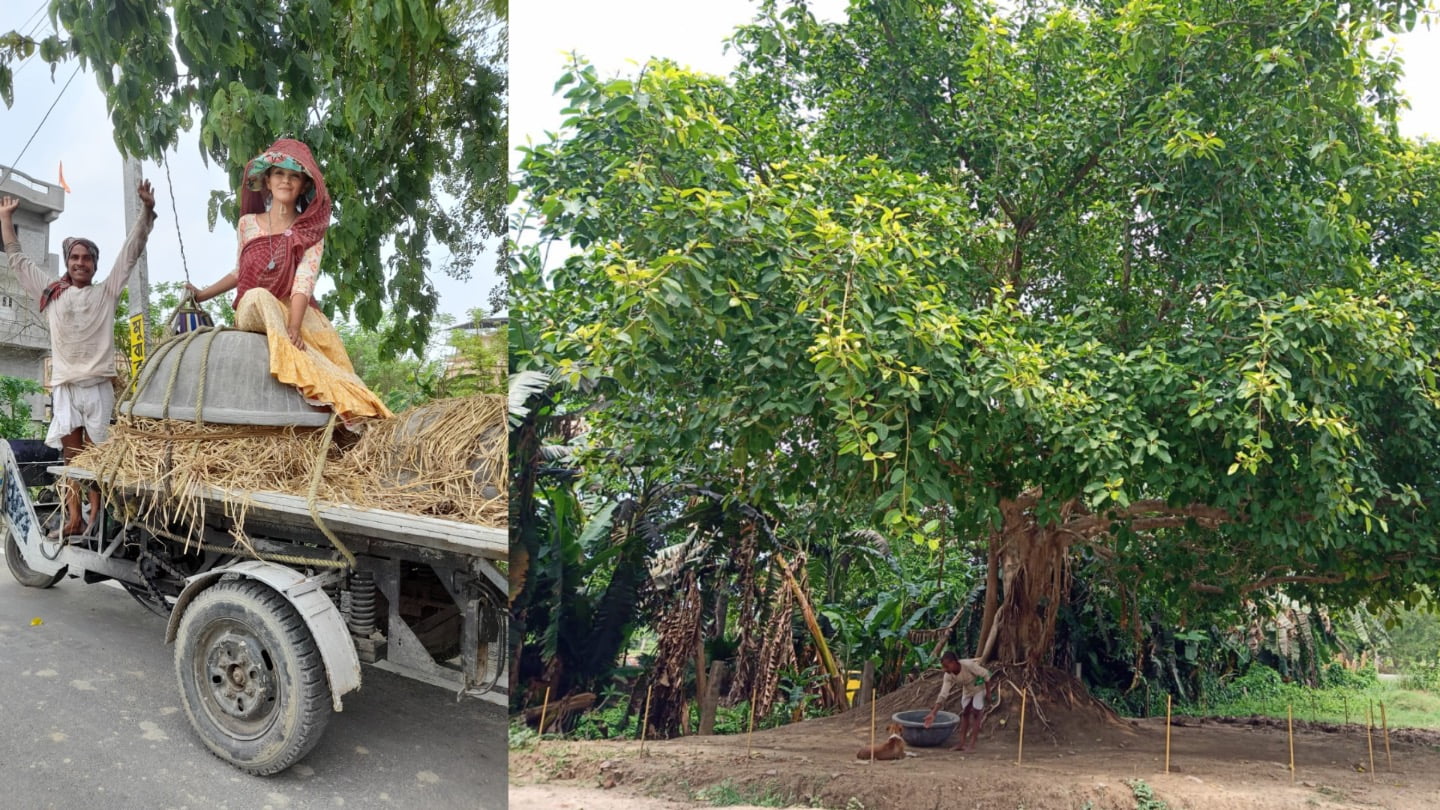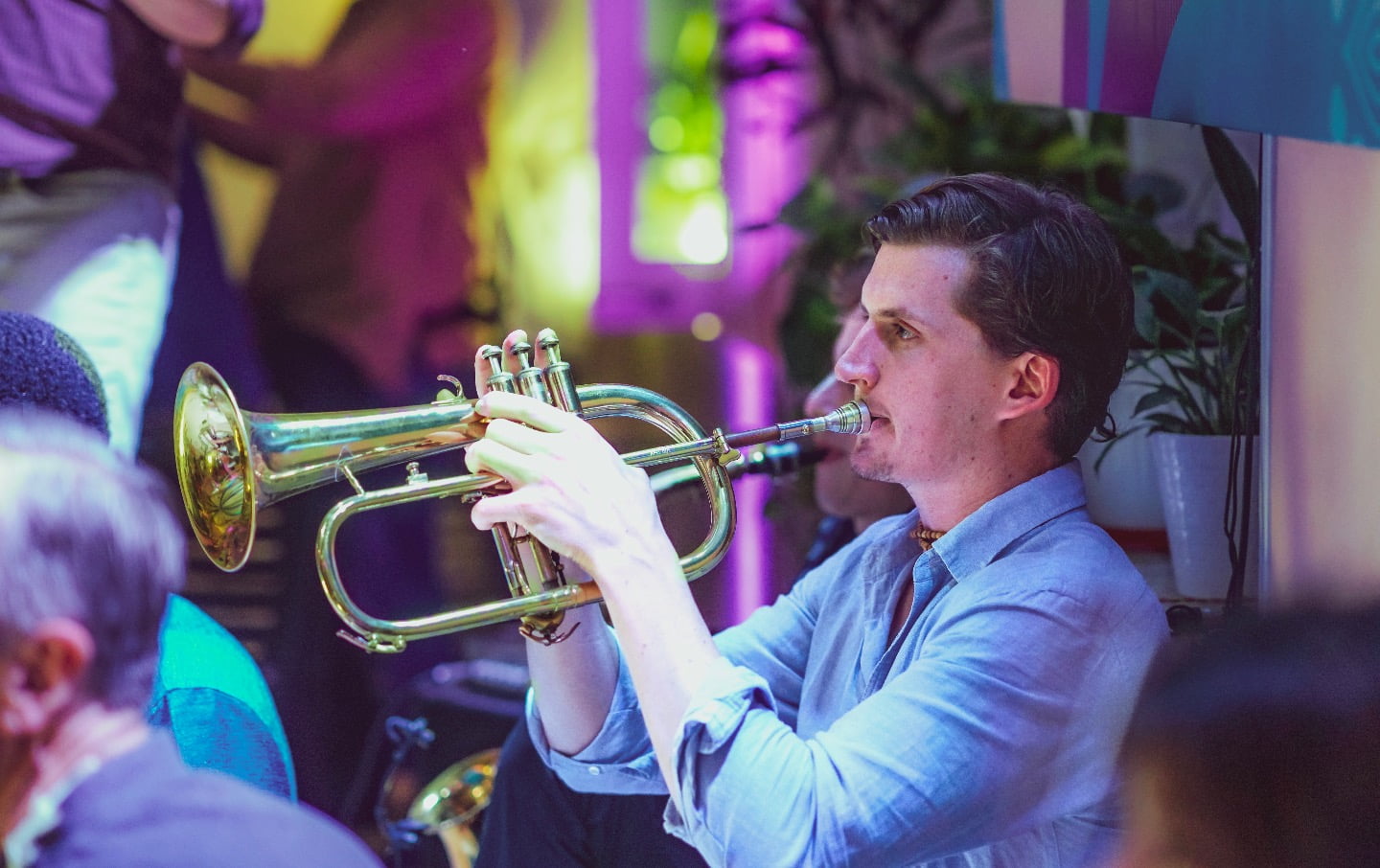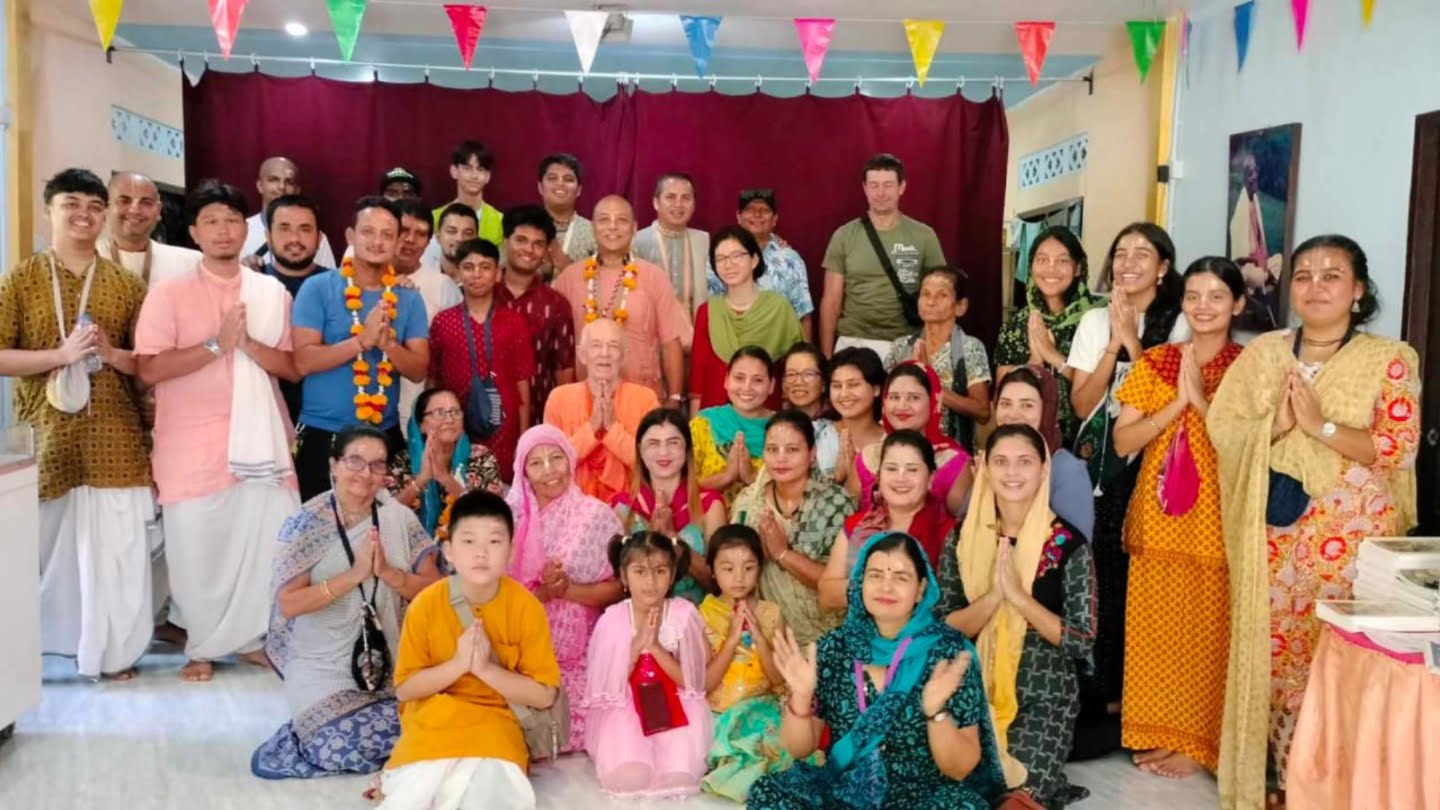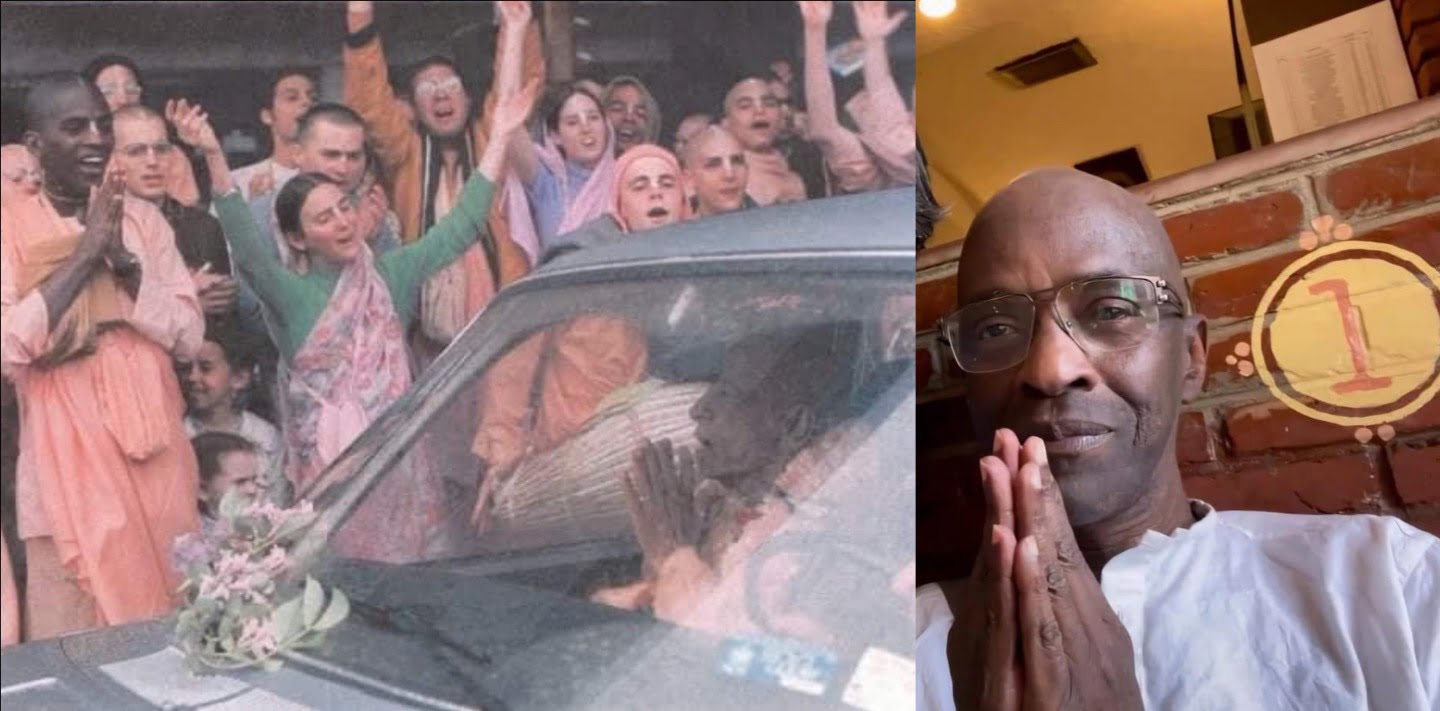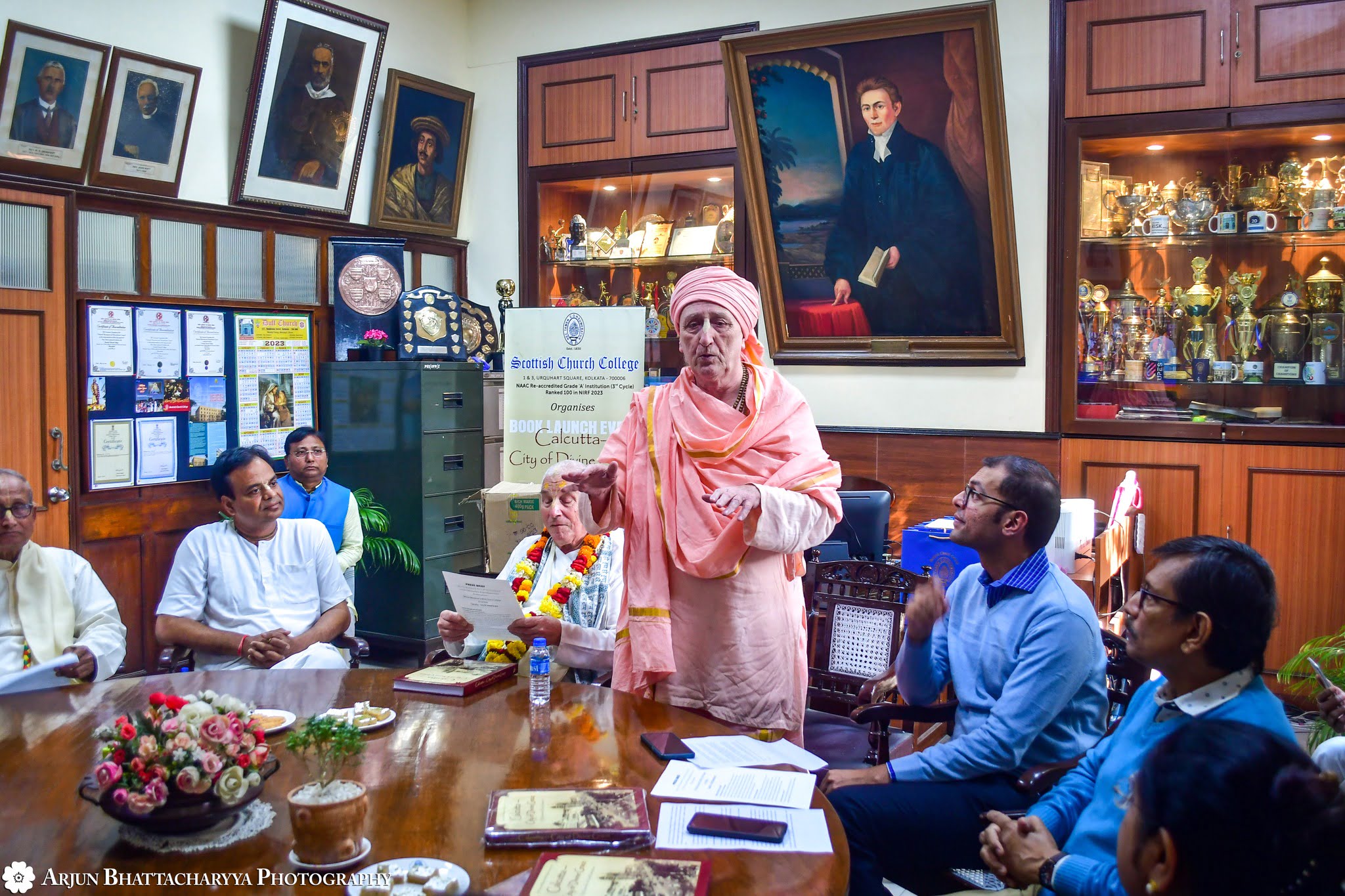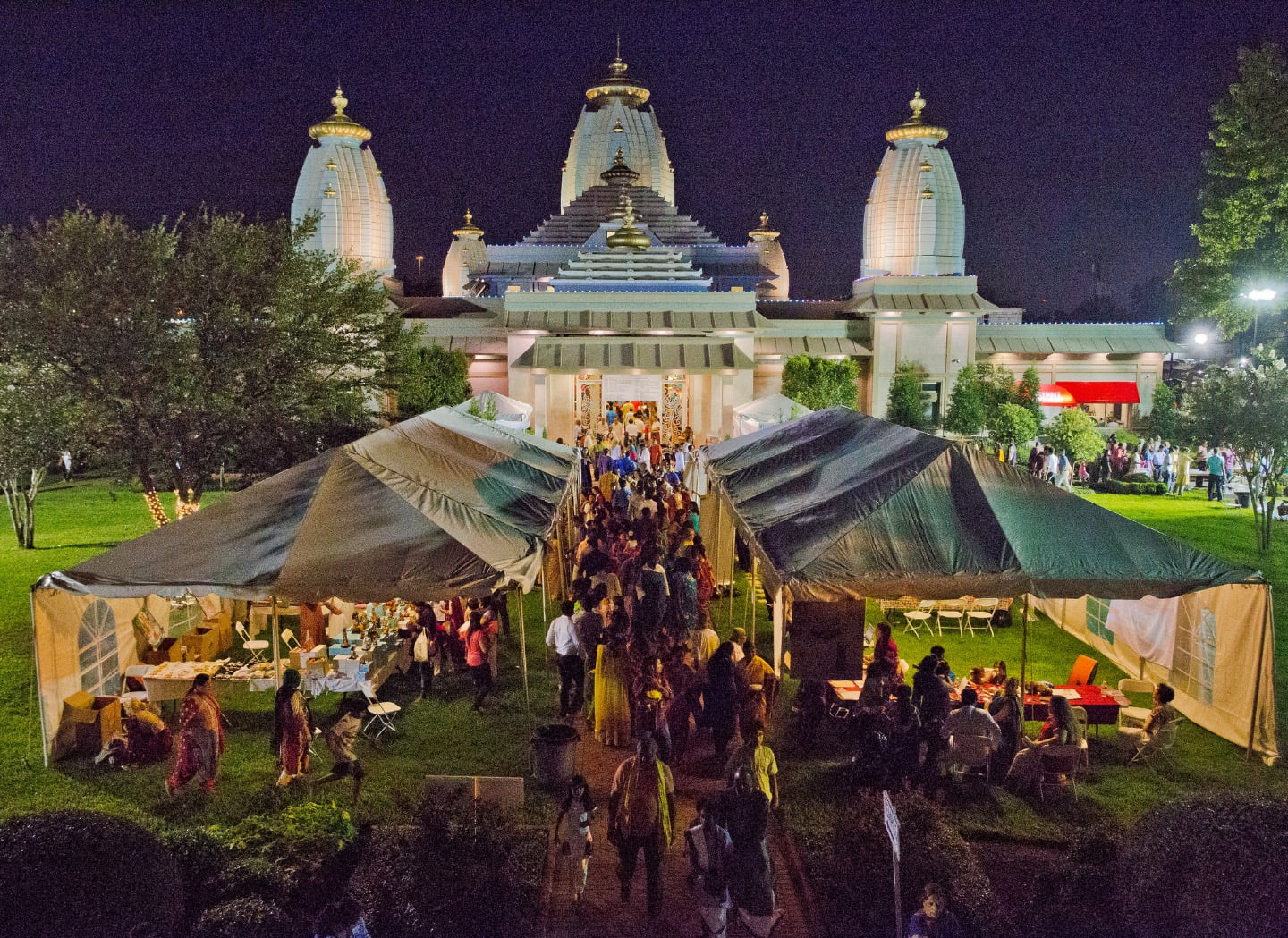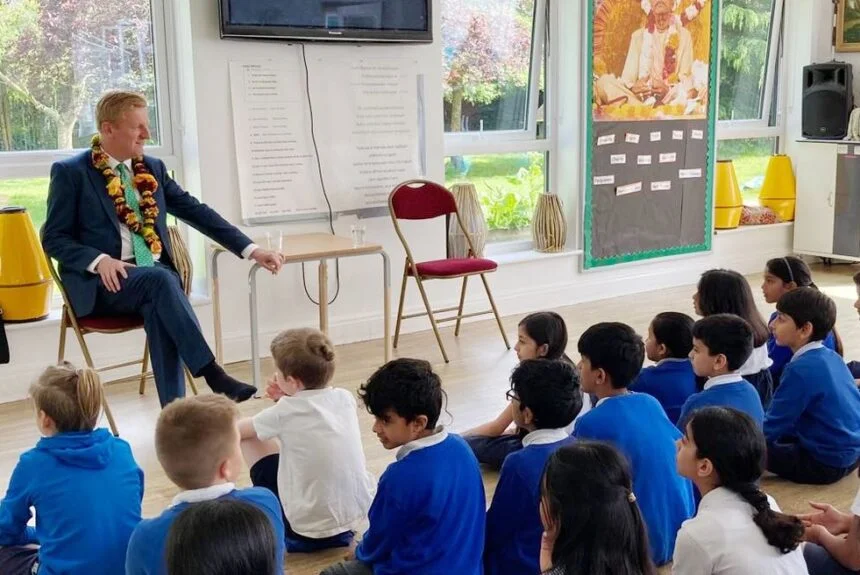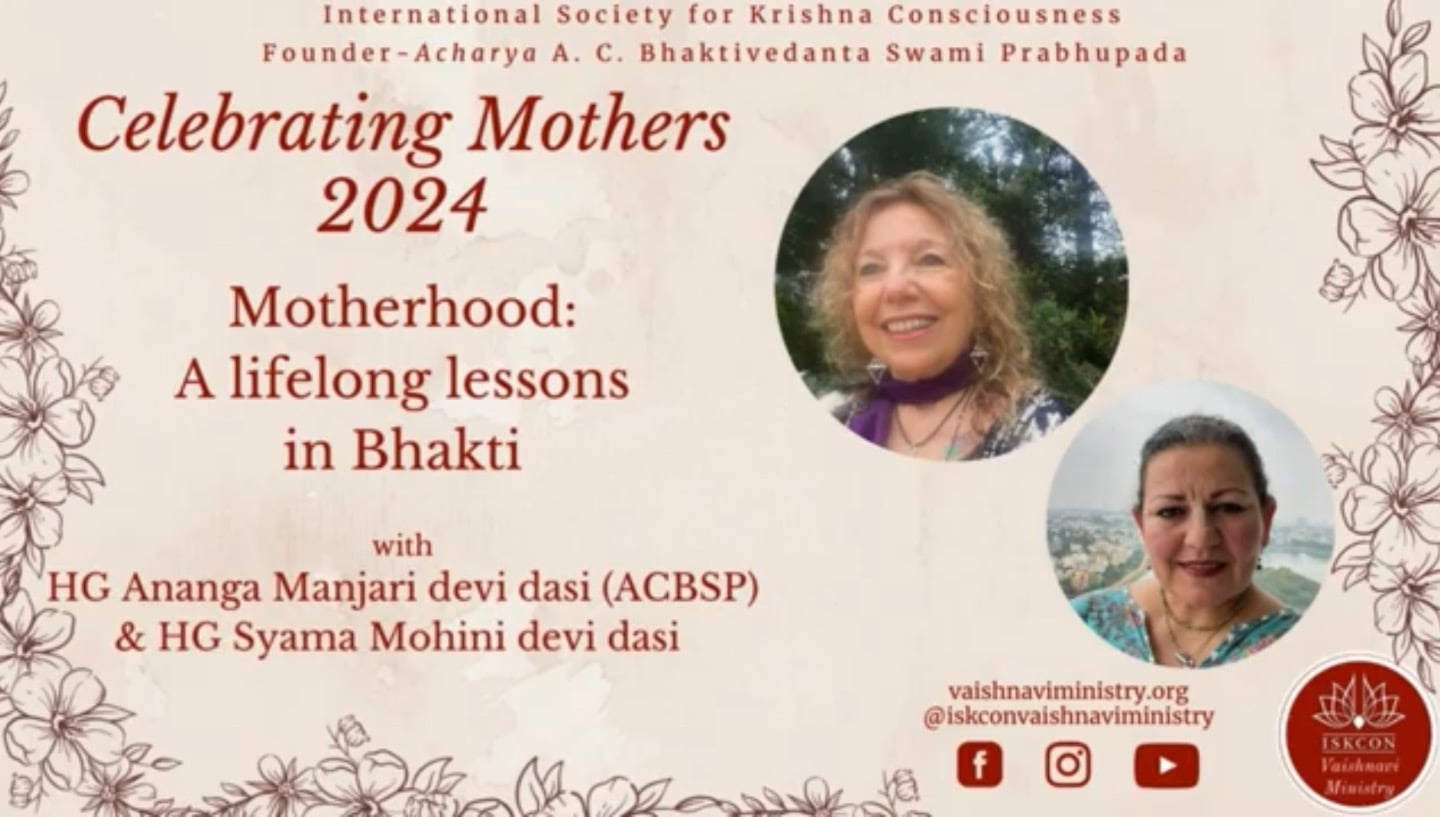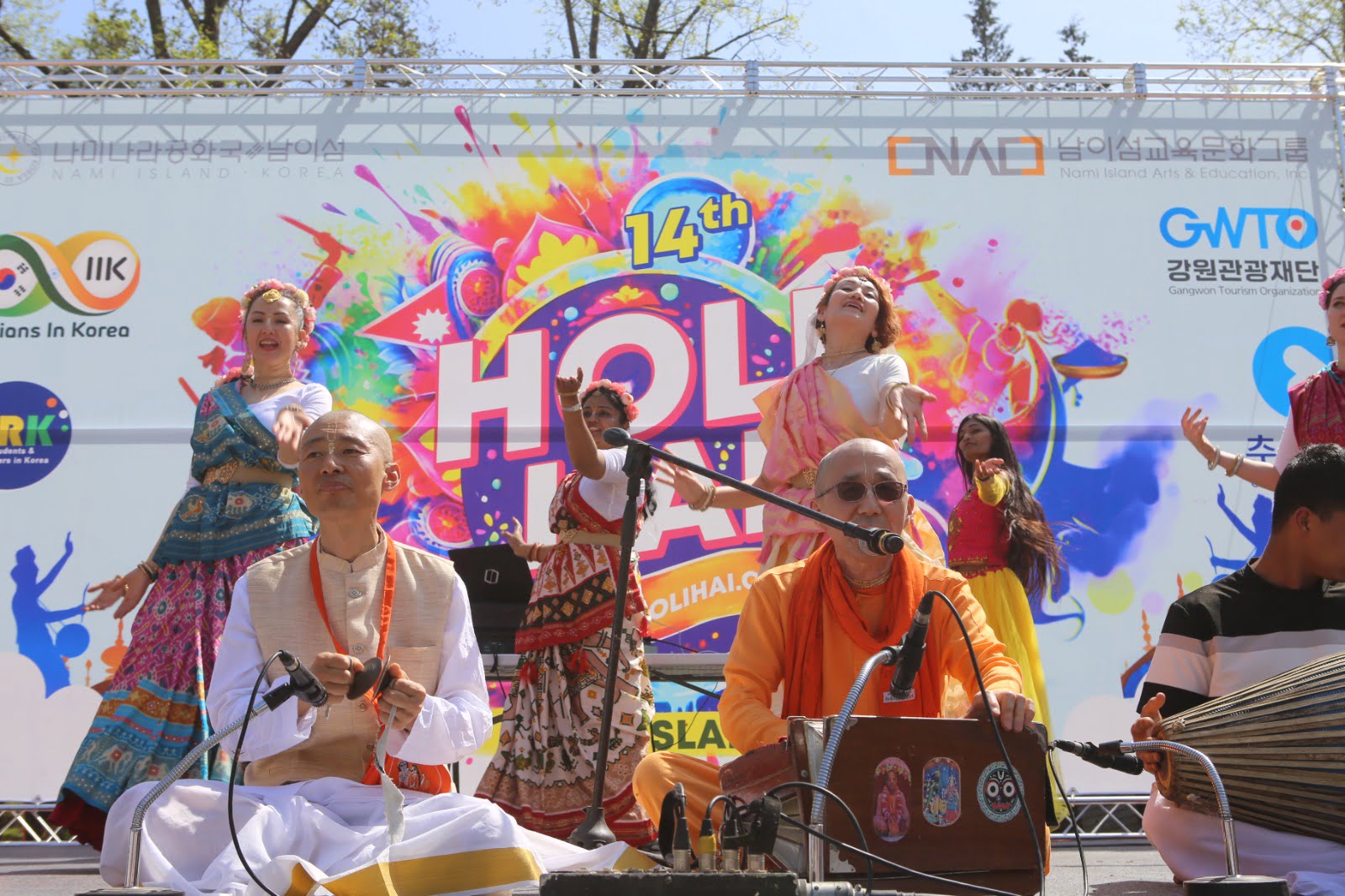Fabric of the Gods Show Displays Vaishnava Fashions
By Madhava Smullen | Мар 06, 2014
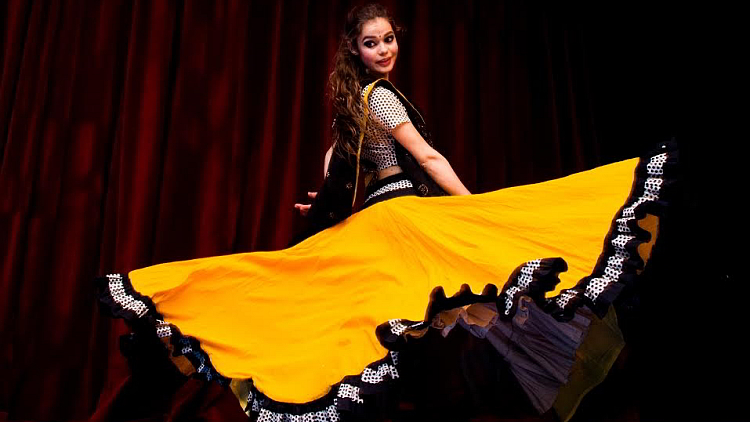
Hundreds packed into the auditorium at Srila Prabhupada’s Samadhi in Mayapur, West Bengal at 7pm on February 21st to watch Fabric of the Gods, a show depicting Vaishnava fashions throughout history.
The show was presented as part of the 2014 ISKCON Leadership Sanga, which brought together nearly 1,000 ISKCON leaders from around the world.
Fabric of the Gods was supported by VANDE (Vaishnava Arts for a New Devotional Era), a GBC initiative that has backed many Vaishnava film festivals, plays and art exhibits.
It was written and choreographed by Australian Srila Prabhupada disciple and fashion designer Sukla Devi, with inspiration from GBC and dramatist Bhaktimarga Swami, and assistance from award-winning professional designer Mandali Mendrilla from Croatia.
The show featured male and female international and local models aged eight to forty, a few with professional training in modeling and others with backgrounds in acting and yoga.
It began with a scene from the ancient epic Mahabharata. As the evil Kauravas attempted to disrobe the virtuous Queen Draupadi, Lord Krishna ensured there was no end to her sari.
“This six to nine yard strip of unstitched cloth is a symbol of purity and virtue and is said to be the longest standing fashion statement in history,” said narrators Bhaktimarga Swami and Kripamoya Das.
As beautiful flute music from Hariprasad Chaurasia floated out of the speakers on either side of the stage, the show then brought the audience to Lord Krishna’s birthplace of Vrindavana.
Wearing a simple sari, a gopi carried a pot of Yamuna water on her head, as the narrators described the sacred village’s rich heritage of embroidery.
Next, as Rajasthani folk music swept through the crowd, the desert sands of Jaipur were conjured up, and local saris like the bandhini and bandhej were displayed.
One model in a colorful sari carried a Govindaji mask in honor of Jaipur’s famous Deity, while others in gopi skirts bedecked with mirrors danced a joyous folk dance around her.
“The main techniques of Rajasthan involve hand block printing, tie dye, and embroidery,” the narrators explained.
From Jaipur the show went to Varanasi, one of the most famous places of pilgrimage in India, often known as ‘the wedding venue.’ A brahmana chanted mantras and offered a lamp to Gangadevi as marrying couples surrounded him, garlanding each other.
All were dressed in the distinctive and sophisticated designs of the region, utilizing combinations of gold and silver jari textiles, gold and silver thread and woven borders.
Next came Jagannath Puri, Orissa, with one devotee portraying Lord Jagannath on His Ratha Yatra cart, as Kripamoya’s epic “The Great Chariot Festival” played from his album Chakram. Other models, acting as the crowds, were dressed in Orissan handloom sari styles like the ikat, bomkai, and sambalpuri, which utilize pure silk and geometrical designs.
“The sari of Orissa draws from the culture of Jagannatha, and as such extensively uses four basic colors — black, white, red and yellow,” explained the narrators.
The next scene came home to Mayapur, West Bengal. As Bengali village kirtans played over the sound system, the various handloom cotton saris of Bengal were displayed.
The narrators described the jamdhani sari as soft and comfortable to wear, the baluchari sari as famous for its harmony of color, the pallu for being adorned with depictions of the Lord’s pastimes, and all for their fine weave and stylish looks.
Finally, the show whisked audience members not only far away but back in time, to the streets of 1970s New York and the beginnings of the sankirtana movement in the West. As Srila Prabhupada’s classic track, “Vande Ham” played, early devotees danced in their simple dhotis and saris. The audience was deeply moved.
“A dhoti is a four to six feet white or colored strip of cloth which is traditional attire mainly worn by men in villages,” explained the narrators.
They then described how the counterculture began adopting sikhas and pseudeo devotee attire, and how the arrival of Western devotees in India inspired an international exchange between Indian textile merchants, ISKCON temple stores, and even international fashion houses as requests for new colors, patterns and styles emerged.
They also described how ISKCON infiltrated the world of fashion and continues to do so to this day.
ISKCON Los Angeles’ temple gift store draws Hollywood celebrity clients. New Zealand Designer Karen Walker claimed that she drew inspiration from Hare Krishna devotees for her collection at the 2014 New York Fashion Week. And Mandali Mendrilla’s couture designs, which have been displayed at Croatian Fashion Week, incorporate dhotis and chaddars, images of Lord Jagannath, and themes based on the spirit soul and reincarnation.
The show concluded with presentations of the latest Bhakti designs by today’s devotee designers, including Australian Sukla Dasi of Sharski Design, Jalangi Dasi and Isvari Dasi from Mayapur, Radhika Devi of Gopi Skirts by Radhika in Laguna Beach, California; and Mandali Mendrilla with her brand Lalalali.
The show, although put together in just four days, was a hit with the audience, and is likely to see a sequel in future years at the Mayapur Festival or ILS.
Mandali feels that it’s a springboard to sharing Vaishnava culture with the world, and could spawn similar more expensively produced shows for general audiences. It has also helped devotee designers gain more confidence in their work and abilities.
“It could also be an an inspiration for devotees to become more aware of how important clothing can be,” says Mandali. “People are often about first impressions, and if our devotees are not well-dressed and presentable when they go out into the world to share Krishna consciousness, people might not be able to relate to them.”
For her part, Mandali says, “I’m personally inspired to make Vaisnava clothing approachable and relatable, creating a bridge between catwalk fashion and traditional temple clothing.”





